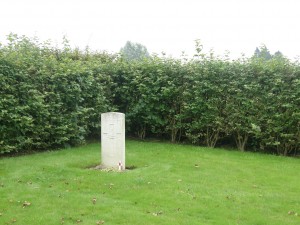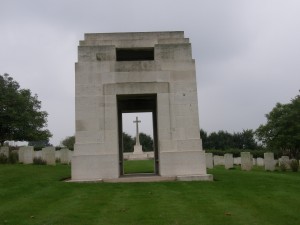Thomas Alfred Cooper
Name: Thomas Alfred Cooper
1898 - 16th October 1918
Place of Birth: Arlesey
Occupation: Employed at Phoenix Works, Letchworth
Division: 1st Battalion
Regiment: Bedfordshire Regiment
Rank: Private
Buried: I. A. 1, Glageon Communal Cemetery, Nord, France
Thomas was born in 1898, the youngest son of Charles and Fanny Cooper of High Street, Arlesey. Thomas was part of a large family with three older brothers; Percy, Sydney and Frank, as well as two sisters Daisy and Emily. In 1901 the family lived on Straw Street in Arlesey, before moving to the High Street. Thomas was employed at the Phoenix Works in Letchworth. Phoenix was based in Pixmore Avenue and manufactured the Phoenix Light motor car, carrying on production until early 1915 when munitions work became obligatory.
Thomas enlisted in the Bedfordshire Regiment in Hitchin (service number 31914) in October 1916 before transferring to the 1st Battalion of the Lincolnshire Regiment. He was wounded in the leg while serving in France in June of 1917 and spent four months at the hospital in Nottingham before convalescing for a further four months in Ampthill. He returned to France on April 2nd and was made a Prisoner of War on 16th April 1918, sending his parents a card on 20th April to say he was sound. From 1917, Germany kept British and French prisoners of war on the Western Front in dangerous locations, carrying out forced labour as reprisal for the way the British and French had used forced German labour – the French had forced the German prisoners to work under shellfire for months on the Verdun battlefield. Such reprisals marked a significant escalation in the mistreatment of prisoners of war. Thomas died in a German prisoner of war camp on October 16th 1918.
Thomas is remembered with honour at the Glageon Communal Cemetery Extension in France, 56km from the town of Cambrai. The cemetery was used for the burial of German soldiers and Allied prisoners from September 1914 to August 1918, then the extension was begun and used until the following October. The German, American and Italian, and a number of French graves have now been removed from both burial grounds, leaving the British and Russian graves. There are over 300 soldiers commemorated at this site, including 10 still unidentified.






